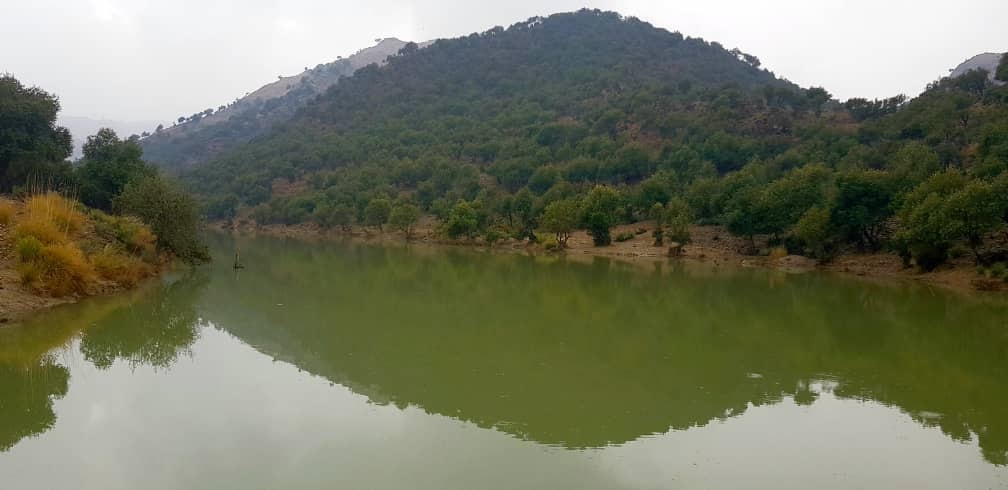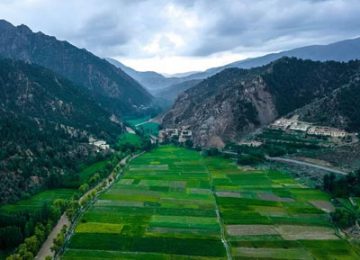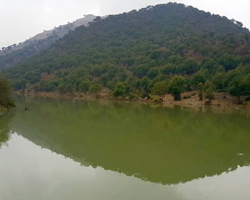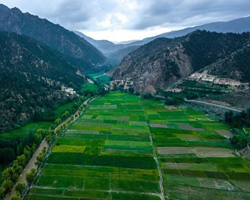Water Waste Management
Wastewater refers to any water that is not clean or is adversely affected in quality by human-induced activities. Wastewater originates from a combination of domestic, industrial, commercial, or agricultural activities.
Wastewater treatment or management refers to the processes used to convert wastewater into an effluent that can be either returned to the water cycle with negligible environmental impact or can be reused.
Waste Water Management
The major objective of wastewater treatment is generally to allow human and industrial effluents to be disposed of without danger to human health or unacceptable damage to the natural environment.
Wastewater Treatment Process
Phase Separation − It transfers impurities into a non-aqueous phase.
Sedimentation − Sedimentation is a physical water treatment process using gravity to remove suspended solids from water. Solid particles entrained by the turbulence of moving water may be removed naturally by sedimentation in the still water of lakes and oceans.
Filtration − Suspension of fine solids may be removed by filtration through physical barriers such as coarser screens or sieves.
Oxidation − This process diminishes the biochemical oxygen demand of wastewater and may reduce the toxicity of some impurities. Advanced Oxidation Processes (AOPs) are a set of chemical treatment of wastewater purported to remove organic and also inorganic materials in waste water by oxidation through reaction with hydroxyl radicals.
Chemical oxidation may remove some persistent organic pollutants and concentrations remaining after biochemical oxidation.
Wastewater treatment plants are set up for effective treatment of wastewater. They may be distinguished by the type of wastewater to be treated. They are as follows.
Sewage treatment plants
Industrial wastewater treatment plants
Agricultural wastewater treatment plants.
Air, Water & Forest Acts
Environment constitutes air, water, land, or vegetation. To protect the environment means to take constructive measures to free these natural objects from pollutants. The measures are backed by the constitution and the chief law making forum in a country so as to ensure an expedited and assured implementation of the measures. An Act provides for the prevention, control and abatement of air pollution, water pollution, and forest degradation.
For instance, a number of acts have been enacted to protect and improve air, water and forest in India.
Acts Related to Air Pollution
The Factories Act and Amendment, 1948 was the first to express concern for the working environment of the workers. The amendment of 1987 has sharpened its environmental focus and expanded its application to hazardous processes.
The Air (Prevention and Control of Pollution) Act, 1981 provides for the control and abatement of air pollution. It entrusts the power of enforcing this act to the Central Pollution Control Board (CPCB).
The Air (Prevention and Control of Pollution) Rules, 1982 defines the procedures of the meetings of the Boards and the powers entrusted to them.
The Atomic Energy Act, 1982 deals with radioactive waste.
The Air (Prevention and Control of Pollution) Amendment Act, 1987 empowers the central and state pollution control boards to meet with grave emergencies of air pollution.
The Motor Vehicles Act, 1988 states that all hazardous waste is to be properly packaged, labeled, and transported.
Acts Related to Water Pollution
The Indian Fisheries Act, 1897 establishes two sets of penal offences whereby the government can sue any person who uses dynamite or other explosive substance in any way (whether coastal or inland) with the intent to catch or destroy any fish, or poisonous fish in order to kill.
The River Boards Act, 1956 enables the states to enroll the central government in setting up an Advisory River Board to resolve issues in inter-state cooperation.
The Merchant Shipping Act, 1970 aims to deal with waste arising from ships along the coastal areas within a specified radius.
The Water (Prevention and Control of Pollution) Act, 1974 establishes an institutional structure for preventing and abating water pollution. It establishes standards for water quality and effluent. Polluting industries must seek permission to discharge waste into effluent bodies. The CPCB (Central Pollution Control Board) was constituted under this Act.
The Water (Prevention and Control of Pollution) Cess Act, 1977 provides for the levy and collection of cess or fees on water consuming industries and local authorities.
The Water (Prevention and Control of Pollution) Cess Rules, 1978 contains the standard definitions and indicates the kind of and location of meters that every consumer of water is required to affix.
The Coastal Regulation Zone, 1991 Notification puts regulations on various activities, including construction. It gives some protection to the backwaters and estuaries.
Acts Related to Forests
The Indian Forest Act and Amendment, 1984 is one of the many surviving colonial statutes. It was enacted to ‘consolidate the law related to forest, the transit of forest produce, and the duty to be levied on timber and other forest produce’.
The Wildlife Protection Act and Rules, 1973 and Amendment 1991 provides for the protection of birds and animals and for all matters that are connected to it, whether it be their habitat or the waterhole or the forests that sustain them.
The Forest (Conservation) Act and Rules, 1981, provides for the protection of and the conservation of the forests.
The Biological Diversity Act, 2002 is an act to provide for the conservation of biological diversity, sustainable use of its components, and fair and equitable sharing of the benefits arising out of the use of biological resources and knowledge associated with it.
Environmental Studies – Water Pollution
Water pollution may be defined as alteration in physical, chemical, and biological characteristics of water, which may cause harmful effects on human and aquatic life.
Pollutants of Water
Following are some of the reasons for water pollution.
Disposal of sewage and sludge into water bodies such as river, streams, and lakes.
Inorganic compounds and minerals by mining and industrial activities.
Use of chemical fertilizers for agricultural purposes.
Synthetic organic compounds from industrial, agricultural, and domestic garbage.
Oil and petroleum from tankers’ accident, offshore drilling, combustion engine, etc.
Radioactive wastes
Pollutants
Water Pollution Control
Environmental Education − Individuals and the masses should be educated about the significance of quality of water and its impact on the economy, the society, and ecology.
Sewage Treatment − The household water should be treated properly to make it environmentally safe. Necessary steps should be taken to ensure that effective sewage treatment process is put in place and contaminated water doesn’t get mixed with the fresh water bodies.
Accountability of Industrial Units − The industrial setups should make provisions for treatment of waste materials and water, and for its safe drainage.
Afforestation − Planting trees can reduce the water pollution to a large extent as they check surface soil runoff by running water.
Soil Conservation − Soil conservation add many inorganic substances in the surface and underground water. Soil conservation is, therefore, a useful technique to reduce water pollution.
Reduced Use of Chemical Fertilizers − Chemical fertilizers add nitrates in water bodies. Use of compost manures can help reduce the problem of eutrophication in the water bodies.
Financial Support − Governments should make provisions for adequate funds to the civic bodies for water pollution control.
Legislation and Implementation of Stringent Environmental Laws − The need of the hour is that the government should legislate and implement strict environmental laws for the protection of water bodies, treatment of waste water, etc. The violators of such laws should be given exemplary punishment.










